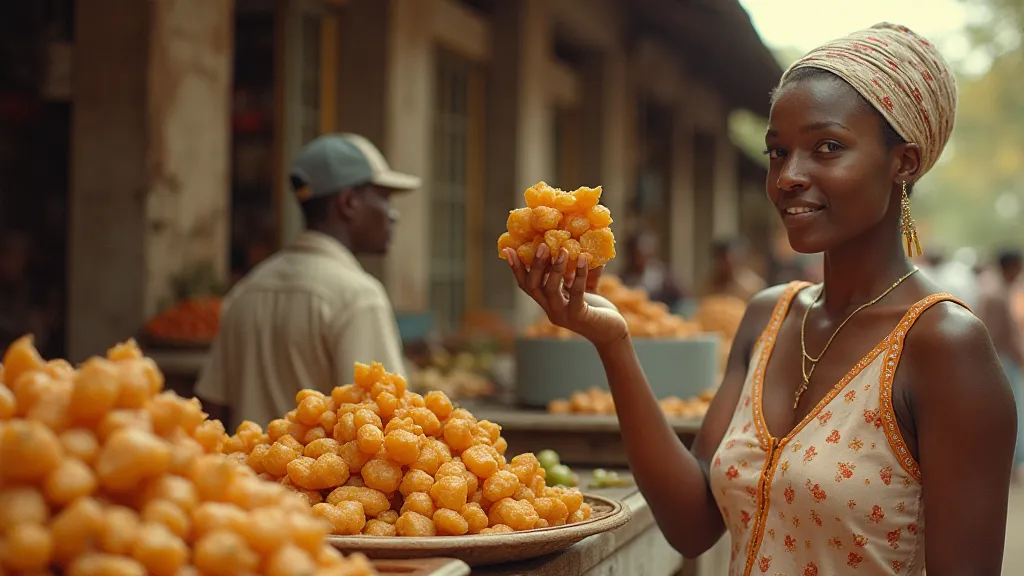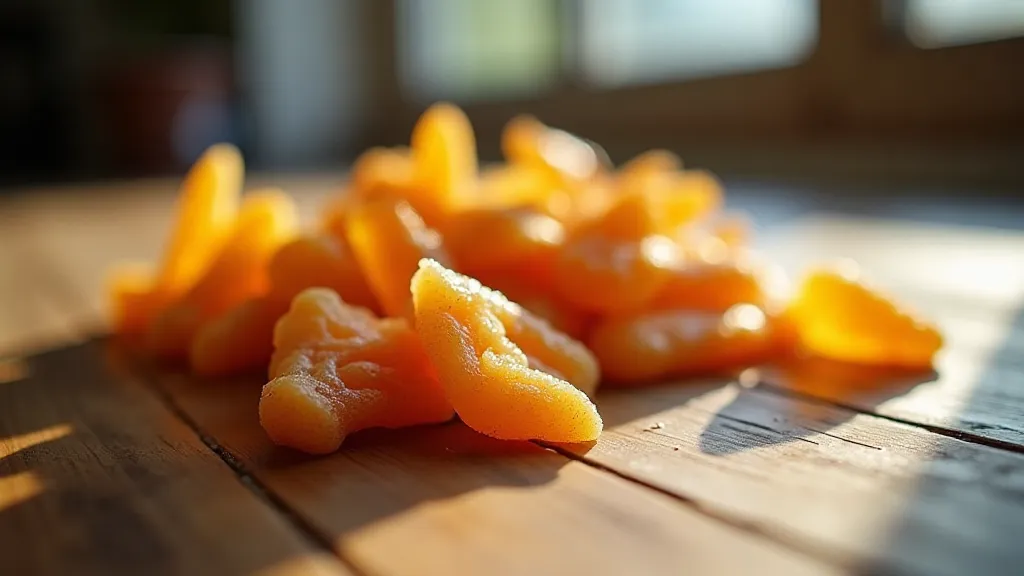The Sweet Persistence: Candied Ginger and the Enduring Soul of the Caribbean
The aroma hits you first. A sharp, warming spice, instantly recognizable, yet layered with a subtle sweetness that hints at something more. It’s the scent of candied ginger, and in the Caribbean, it’s more than just a confection; it’s a living, breathing thread woven through the fabric of history, resilience, and a deep-rooted connection to the earth.
I first encountered candied ginger properly during a trip to St. Lucia years ago. My grandmother, a woman of few words but immense wisdom, presented me with a small, intricately carved wooden box filled with gleaming amber shards. “This,” she said, her voice raspy with age, “is a piece of our story.” That simple offering unlocked a world of understanding, not just about the flavour, but about the spirit of the Caribbean itself.
Before we dive into the delightful process of making candied ginger, let’s trace its journey. Ginger (Zingiber officinale) isn’t native to the Caribbean. It arrived with the waves of early trade – the ships laden not just with human cargo, but with seeds and spices, a hopeful offering of life and sustenance in a new world. Portuguese explorers were instrumental in introducing ginger to the Caribbean islands in the 16th century, likely bringing it from Asia via their vast trading networks. Its versatility was quickly recognized: it could be consumed fresh, dried, or, crucially, preserved as a sweet treat.

Ginger: More Than Just a Spice
In Caribbean culture, ginger transcends its status as a mere spice. It holds a revered position, deeply intertwined with folk medicine and healing traditions. For generations, ginger has been a cornerstone of natural remedies, believed to alleviate everything from nausea and digestive ailments to sore muscles and arthritis. Grandmothers, and grandfathers, were (and still are) the primary dispensers of this knowledge, passing down secret recipes and preparation methods. The intense heat of the Caribbean climate made preserving foods essential, and candying ginger proved a remarkably effective method, allowing families to enjoy the spice’s benefits throughout the year.
The process itself is a testament to ingenuity and resourcefulness. It’s not a quick or easy endeavor. It demands patience, attention to detail, and a connection to the ingredients. The fresh ginger root is first peeled and sliced, often into attractive shapes. It’s then simmered repeatedly in increasingly concentrated sugar syrup, a process known as "blanching." This gradual transfer of flavour and sweetness takes hours, often spanning an entire day. The syrup is strained and reused, a testament to the frugality and sustainability that characterizes Caribbean traditions.
The result is a jewel-like confection – translucent, firm, and radiating a captivating aroma. The sweet, spicy intensity is unlike anything mass-produced in a factory. There's a depth of flavour that speaks of tradition, of generations perfecting the craft.
A History Etched in Sweetness
Consider the historical context. The Caribbean has known hardship – the legacy of colonialism, slavery, and economic instability. Yet, the people have endured, their spirit unbroken. The act of making candied ginger, repeated countless times across the islands, becomes a quiet act of defiance, a way of preserving cultural identity and celebrating resilience. Each shard of candied ginger is a small, sweet reminder of the strength and ingenuity of the ancestors.
The trade winds that carried ginger also carried other influences: African traditions, European techniques, and indigenous knowledge. This fusion of cultures is reflected in the variations of candied ginger found across the islands. In some places, a hint of citrus peel is added to the syrup; in others, a touch of scotch bonnet pepper provides a fiery kick. Each variation is a unique expression of local identity.

The Craftsmanship and the Accordion’s Echo
Thinking about candied ginger always makes me think of antique accordions. I have a fascination with them, their intricate mechanics, the way they reflect the music of a culture. An accordion, like a recipe for candied ginger, isn’t just about the individual parts; it's about the harmony they create together. Just as the precise ratio of ginger to sugar and the careful blanching process yield the perfect confection, the masterful alignment of reeds and bellows produces the evocative sounds of calypso, soca, and other Caribbean genres.
I recently acquired a beautifully restored button accordion from Dominica. Its ivory keys were worn smooth by years of use, and the bellows bore the faint scent of salt air and sweat. Restoring it wasn’t just about replacing broken parts; it was about preserving a piece of history, about honouring the musician who had poured his soul into its melodies.
Similarly, candied ginger making is a form of preservation – not just of food, but of tradition. The knowledge isn't written in textbooks; it's passed down through generations, whispered secrets shared between mothers and daughters, grandfathers and grandsons. And like the accordion, each family’s recipe holds a unique and irreplaceable character.
Beyond the Sweetness
So, the next time you encounter a piece of candied ginger, take a moment to appreciate its journey. Consider the history it carries, the resilience it embodies, the skill and dedication that went into its creation. It's more than just a sweet treat; it’s a tangible link to the enduring soul of the Caribbean. It’s a reminder that even in the face of adversity, sweetness and beauty can prevail. It's a piece of a story, a fragrant echo of a vibrant culture, preserved in amber-colored shards.






